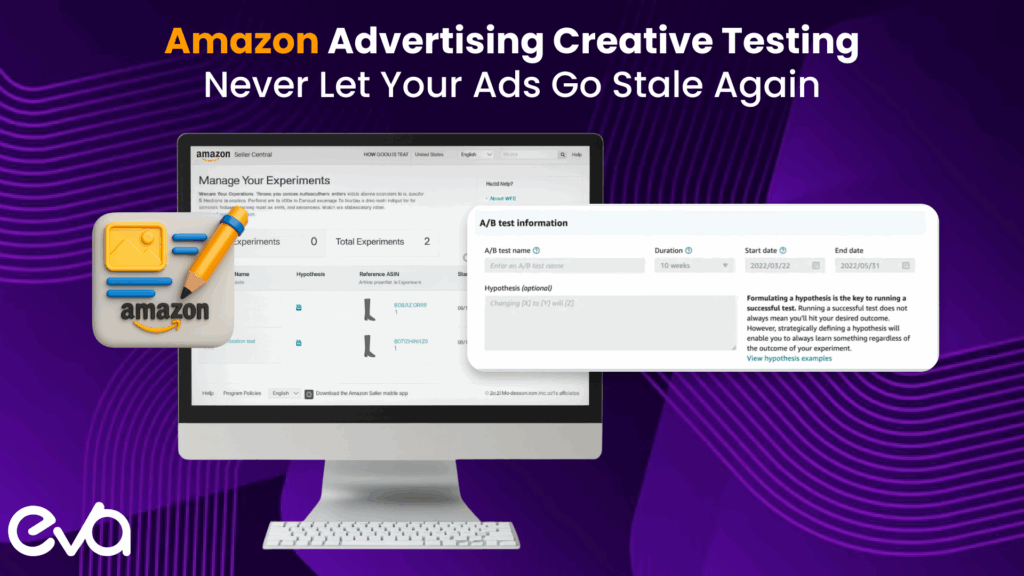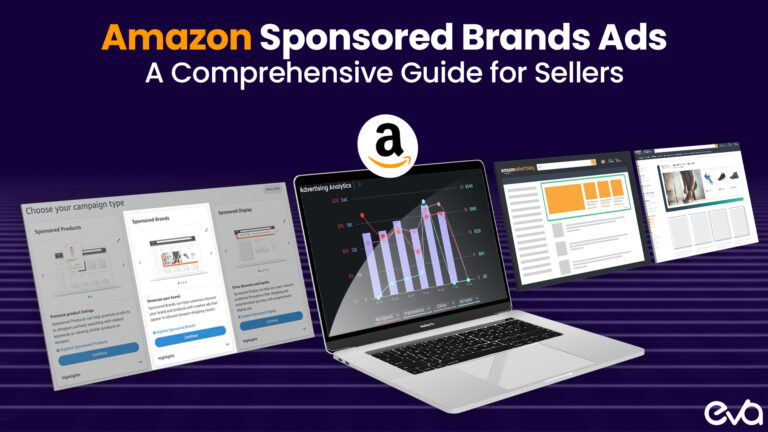Creative performance directly impacts your Amazon advertising ROI. Research shows that audiences begin losing interest in repeated creative elements within 2-3 weeks, yet most brands refresh their Amazon advertising creative reactively rather than proactively.
This comprehensive guide will provide you with a systematic framework for implementing continuous creative testing that maintains peak performance and drives sustainable growth.
Key Takeaway: Brands implementing systematic creative testing see 15-30% improvements in click-through rates and maintain more stable advertising costs compared to those running static creative for extended periods.
Table of Contents
- The Case for Systematic Creative Testing
- Strategic Framework: Creative Testing as Core Business Function
- Amazon’s Native Creative Testing Ecosystem
- Systematic Creative Testing Implementation
- Creative Refresh and Scaling Strategies
- Advanced Creative Testing Best Practices
- Measuring Creative Testing ROI
- Implementation Action Plan
- Frequently Asked Questions
- Conclusion
The Case for Systematic Creative Testing
Amazon’s advertising landscape has fundamentally shifted. With over 6.3 million sellers competing for customer attention, creative differentiation has become as critical as keyword optimization and bid management. Yet while most brands have sophisticated approaches to keyword research and campaign structure, creative testing remains largely ad hoc.
Understanding Creative Performance Degradation
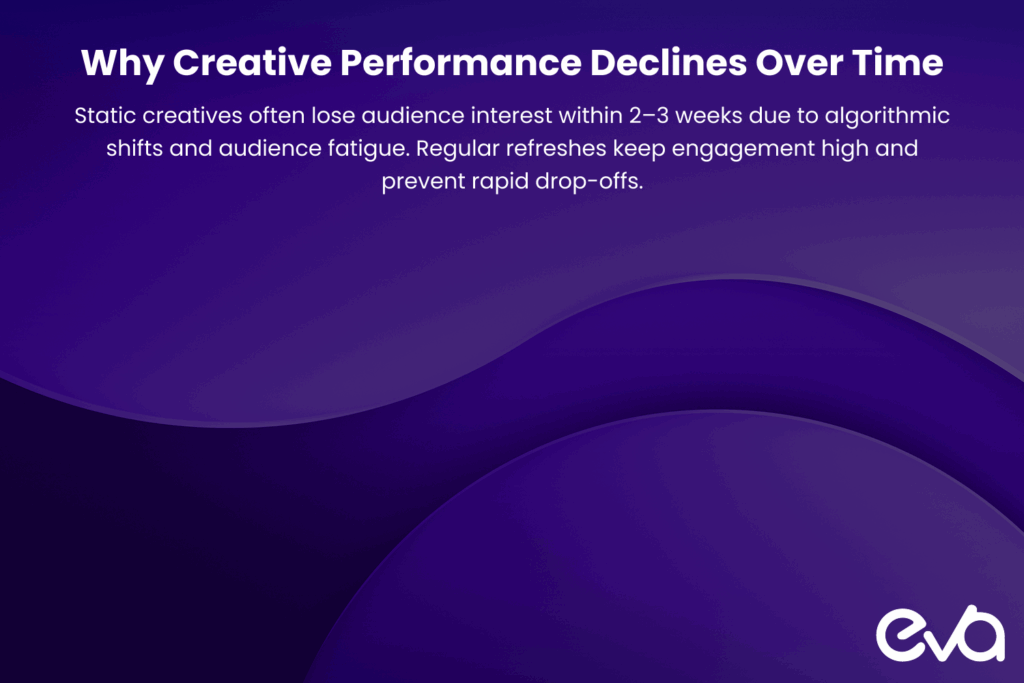
Modern advertising platforms, including Amazon, use machine learning algorithms that detect when audiences become less responsive to specific creative elements. This phenomenon manifests in several ways:
Algorithmic Throttling: Amazon’s algorithm reduces ad exposure when engagement signals decline, even before obvious performance drops appear in your reports.
Increasing Competition for Attention: As competitors launch fresh creative, static ads appear outdated by comparison, reducing relative performance.
Audience Habituation: Repeated exposure to similar messaging and imagery creates psychological adaptation, reducing response rates over time.
Platform Algorithm Bias: Amazon’s system favors engaging, fresh content in ad auctions, meaning stale creative faces both audience fatigue and algorithmic penalties.
The Cost of Reactive Creative Management
Brands that refresh creative only after performance declines face several hidden costs:
- Revenue Opportunity Loss: Every day running suboptimal creative represents missed conversions and reduced market share
- Increased Customer Acquisition Costs: As creative performance degrades, cost-per-click and cost-per-acquisition increase
- Competitive Disadvantage: Proactive competitors gain market share while you’re recovering from performance declines
- Brand Perception Impact: Stale creative can make established brands appear less innovative than newer market entrants
Strategic Framework: Creative Testing as Core Business Function
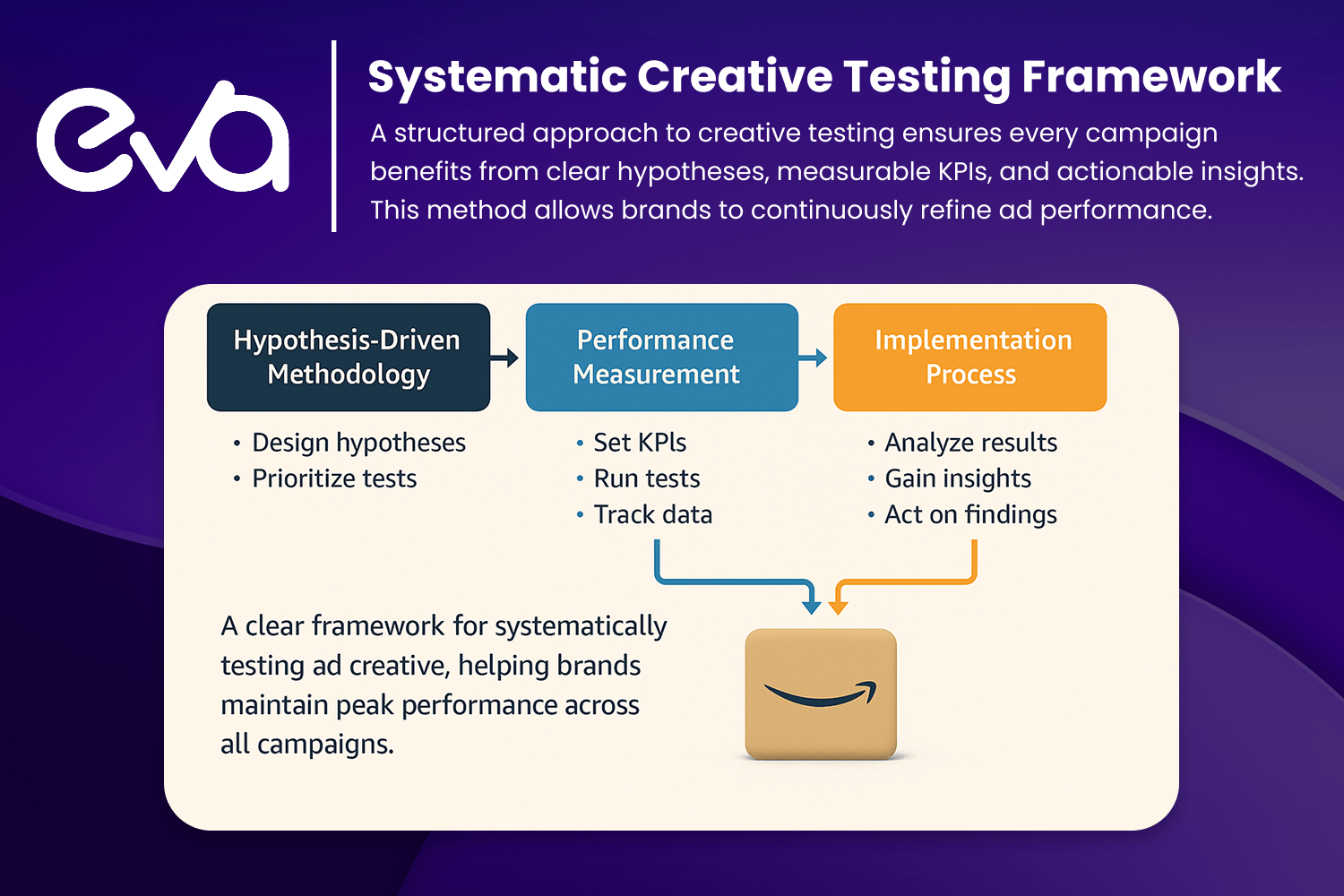
Why Creative Testing Drives Business Results
Effective creative testing provides value beyond immediate performance improvements:
Market Intelligence: Testing reveals customer preferences and buying motivations that inform product development and positioning strategies.
Competitive Positioning: Systematic testing helps brands respond faster to market changes and maintain differentiation advantages.
Scalable Growth Foundation: Creative testing infrastructure built on Amazon can be leveraged across all marketing channels, creating operational efficiencies.
Risk Management: Regular testing prevents catastrophic performance drops that occur when audiences become completely unresponsive to existing creative.
Evidence-Based Creative Testing Principles
Hypothesis-Driven Methodology
Professional creative testing begins with specific, testable hypotheses about customer behavior:
Customer Psychology Testing: “Professional imagery will outperform lifestyle shots for our B2B audience segment” or “Problem-focused messaging will generate higher conversion rates than feature-focused copy.”
Market Positioning Validation: “Emphasizing premium quality will outperform price-value messaging during current economic conditions.”
Audience Segmentation Insights: “Our repeat customers respond better to loyalty-focused messaging than acquisition-focused copy.”
Seasonal Adaptation: “Holiday-themed creative will maintain effectiveness longer than generic promotional creative during Q4.”
Performance Measurement Standards
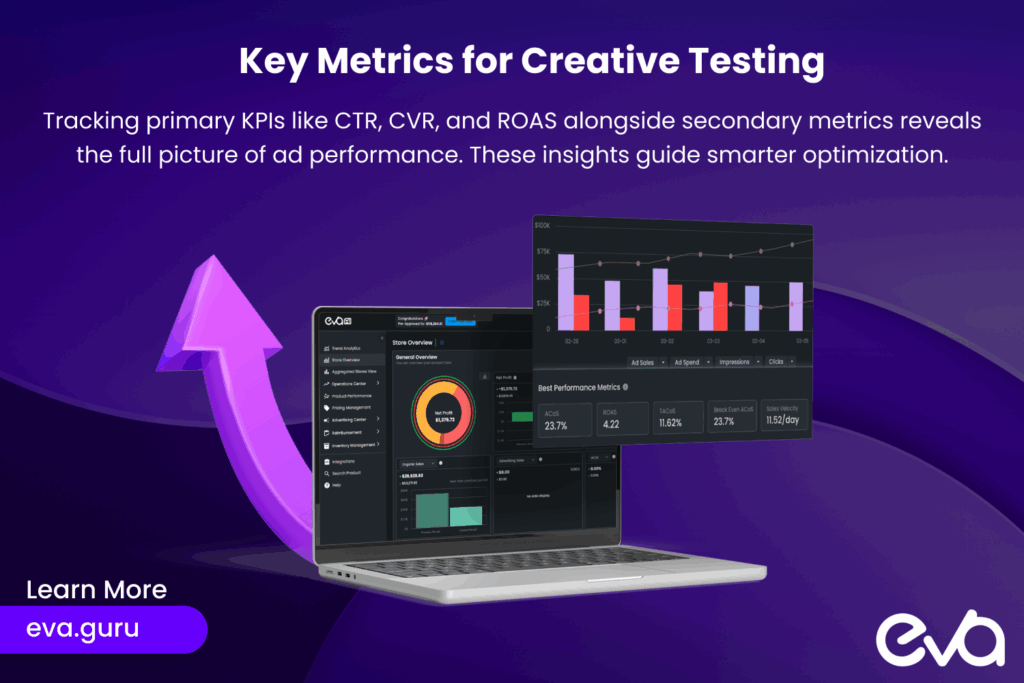
Primary Metrics:
- Click-Through Rate (CTR): Immediate indicator of creative appeal and audience engagement
- Conversion Rate: Measures effectiveness in driving purchase decisions after engagement
- Return on Ad Spend (ROAS): Ultimate measure of creative business impact
- Customer Quality Metrics: Lifetime value and return rates of customers acquired through different creative approaches
Secondary Indicators:
- Impression Share: Changes indicate algorithmic response to creative performance
- Average Order Value: Different creative may attract customers with varying purchase behaviors
- Brand Search Lift: Upper-funnel creative impact on organic brand searches
Amazon’s Native Creative Testing Ecosystem
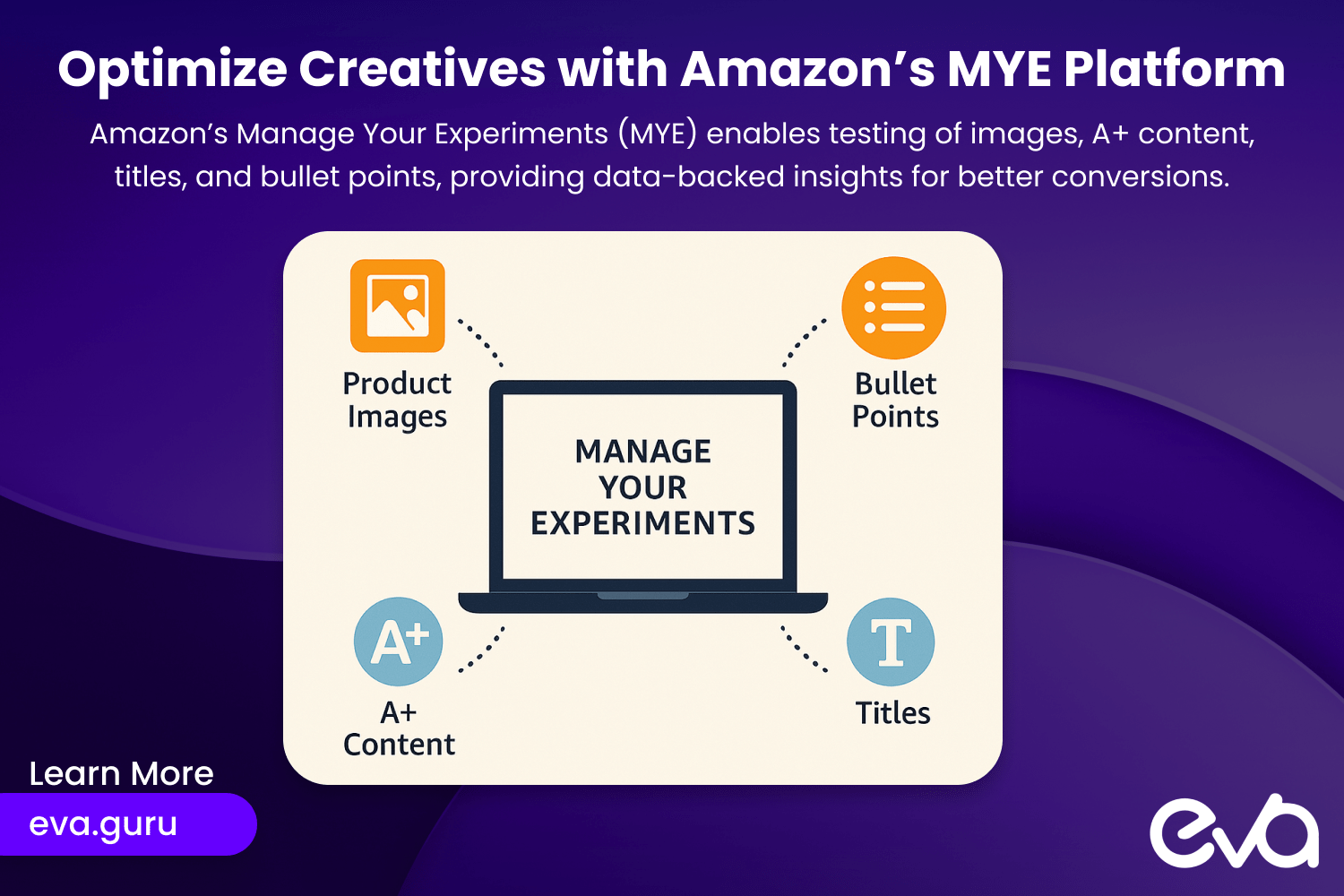
Manage Your Experiments (MYE): Foundation Platform
Amazon’s Manage Your Experiments platform enables systematic testing of product detail page elements that directly impact advertising performance.
Eligibility Requirements:
- Brand Registry enrollment on Amazon US marketplace
- Professional selling account
- ASINs with sufficient traffic volume for statistical significance
- Existing A+ Content for enhanced content testing
Testing Capabilities:
- Product Images: Main images, lifestyle shots, infographic comparisons
- Product Titles: Keyword positioning, benefit emphasis, brand positioning
- A+ Content: Layout variations, messaging hierarchy, visual storytelling approaches
- Bullet Points: Feature emphasis, benefit ordering, technical vs. emotional focus
Implementation Process:
- Baseline Establishment: Document current performance across key metrics
- Test Design: Create significantly different versions (avoid minor variations)
- Duration Planning: Allow 4-10 weeks for statistically significant results
- Result Analysis: Review conversion impact, not just engagement metrics
Sponsored Brands Creative Optimization
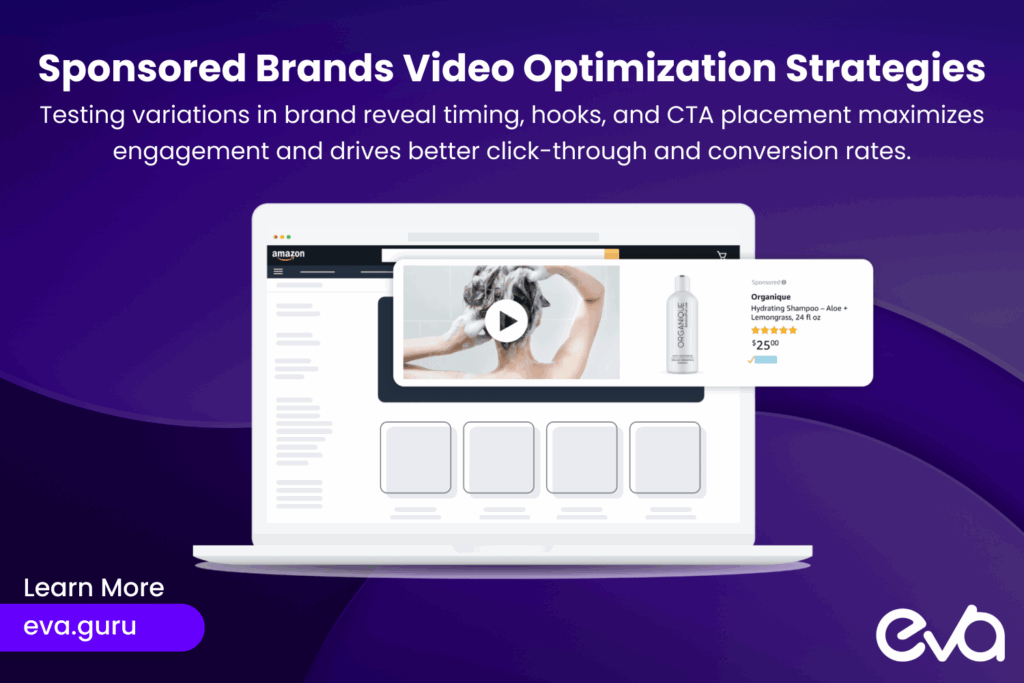
Video Creative Testing: Sponsored Brands video ads offer sophisticated testing opportunities for brand awareness and consideration campaigns.
Key Testing Variables:
- Opening Hook Effectiveness: First 3-second content variations
- Brand Introduction Timing: Early vs. late brand reveal strategies
- Product Demonstration Approaches: Feature-focused vs. benefit-focused storytelling
- Call-to-Action Positioning: Throughout video vs. end-focused CTAs
Custom Image Testing:
- Brand Positioning: Logo prominence, color scheme consistency
- Product Presentation: Single product focus vs. product collection displays
- Value Proposition Communication: Text overlay effectiveness, visual hierarchy
Headline Optimization:
- Message Framing: Question-based vs. statement vs. benefit-focused headlines
- Urgency Elements: Limited-time language vs. evergreen positioning
- Audience-Specific Messaging: New customer vs. repeat customer copy
Amazon DSP Creative Testing Capabilities
Advanced Testing Framework: Amazon DSP provides sophisticated creative testing tools for programmatic display and video campaigns.
Creative Performance Analysis:
- Cross-Device Optimization: Desktop vs. mobile creative effectiveness
- Placement-Specific Performance: Product detail pages vs. category pages vs. external placements
- Audience Segment Response: Different creative performance across demographic and behavioral segments
Sequential Creative Testing:
- Journey-Based Creative: Different messages for awareness vs. consideration vs. conversion stages
- Narrative Development: Multi-touchpoint storytelling effectiveness
- Frequency Optimization: Creative rotation schedules that maintain engagement
Systematic Creative Testing Implementation
Phase 1: Foundation Building (Weeks 1-4)
Infrastructure Setup:
- Performance Baseline Documentation: Establish current creative performance across all active campaigns
- Testing Calendar Development: Plan testing schedules around business cycles and product launches
- Hypothesis Development Framework: Create systematic approaches to generating testable creative theories
Tool Configuration:
- Amazon Attribution Setup: Configure extended attribution windows for creative impact measurement
- Reporting Dashboard Creation: Centralize creative performance data from all Amazon advertising tools
- Team Training Implementation: Ensure consistent testing execution across campaign managers
Phase 2: Testing Execution (Weeks 5-12)
Systematic Testing Process:
Step 1: Strategic Test Design
- Single Variable Focus: Test one creative element at a time for clear causation
- Significant Difference Requirement: Ensure test variations are meaningfully different
- Audience Segmentation: Consider testing different creative approaches for different customer segments
Step 2: Campaign Implementation
- Proper Audience Split: Ensure random assignment to test variations
- Budget Allocation: Provide sufficient budget for statistical significance
- Timeline Management: Resist early optimization based on incomplete data
Step 3: Performance Monitoring
- Weekly Performance Reviews: Track metrics without making premature decisions
- Statistical Significance Tracking: Monitor confidence levels and sample sizes
- External Factor Documentation: Note seasonal effects, competitive changes, or promotional periods
Step 4: Results Analysis and Implementation
- Comprehensive Results Review: Analyze both primary and secondary metrics
- Business Impact Assessment: Calculate revenue impact, not just statistical significance
- Learning Documentation: Record insights for future test development
Phase 3: Advanced Optimization (Weeks 13+)
Sophisticated Testing Strategies:
Multi-Variate Testing: For brands with sufficient traffic volume, test multiple creative elements simultaneously to identify interaction effects and optimal creative formulas.
Sequential Testing Programs: Develop testing sequences that build on previous results, creating cumulative performance improvements over time.
Audience-Specific Creative Development: Create different creative strategies for different customer segments, testing effectiveness across demographic and behavioral groups.
Creative Refresh and Scaling Strategies
Proactive Creative Refresh Framework
Performance-Based Refresh Triggers:
- CTR Decline: 15% decrease from peak performance over 14-day period
- Impression Share Reduction: 10% decrease in impression share for same keywords/audiences
- Cost Efficiency Degradation: 20% increase in cost-per-acquisition without external factors
Calendar-Based Refresh Strategy:
- Seasonal Adaptations: Major creative refreshes aligned with shopping seasons and cultural events
- Competitive Response: Scheduled refreshes following major competitor campaign launches
- Product Lifecycle Alignment: Creative updates coordinated with product launches and promotions
Cross-Platform Creative Scaling
Amazon to Omnichannel Translation:
- Walmart Marketplace Adaptation: Test how Amazon-successful creative performs on Walmart with platform-specific modifications
- Direct-to-Consumer Integration: Adapt high-performing Amazon creative for brand websites and email marketing
- Social Media Extension: Use Amazon creative insights to inform Facebook, Instagram, and TikTok advertising strategies
Creative Asset Library Development:
- Modular Creative Systems: Develop creative elements that can be efficiently combined for different platforms and campaigns
- Performance Documentation: Maintain detailed records of creative performance across platforms and contexts
- Rapid Deployment Capabilities: Create systems for quick creative adaptation and deployment across channels
Advanced Creative Testing Best Practices
Avoiding Common Testing Pitfalls
Statistical Integrity Maintenance:
- Sufficient Sample Size: Ensure adequate conversions for meaningful statistical conclusions
- Time Horizon Discipline: Allow tests to run full duration even when early results appear conclusive
- External Factor Accounting: Consider seasonal effects, promotional periods, and competitive changes when interpreting results
Creative Development Excellence:
- Meaningful Differentiation: Ensure test variations are significantly different to produce actionable insights
- Brand Consistency: Maintain brand guidelines while testing creative variations
- Technical Quality Standards: Use high-quality images and copy that meet Amazon’s advertising standards
Organizational Integration Strategies
Cross-Functional Collaboration:
- Creative Team Integration: Include graphic designers and copywriters in performance analysis and test planning
- Product Marketing Alignment: Coordinate creative testing with product launches and marketing campaigns
- Customer Service Insights: Incorporate customer feedback and common questions into creative testing hypotheses
Performance Culture Development:
- Data-Driven Decision Making: Train teams to prioritize performance data over personal creative preferences
- Continuous Learning Mindset: Establish regular learning sessions to discuss test results and insights
- Innovation Encouragement: Create safe environments for testing bold creative approaches
Measuring Creative Testing ROI
Business Impact Calculation
Direct Performance Improvements:
- Revenue Attribution: Calculate additional revenue generated through improved creative performance
- Cost Efficiency Gains: Measure reductions in customer acquisition costs through better-performing creative
- Market Share Growth: Assess competitive advantage gained through superior creative performance
Strategic Value Creation:
- Customer Insight Generation: Quantify value of market research insights gained through creative testing
- Brand Building Impact: Measure long-term brand awareness and consideration improvements
- Operational Efficiency: Calculate time and cost savings from systematic creative optimization processes
Long-Term Competitive Advantage
Sustainable Performance Systems: Brands implementing systematic creative testing develop several lasting advantages:
Adaptive Capability: Quick response to market changes and competitive threats through established testing infrastructure.
Customer Understanding: Deep insights into customer preferences and behavior patterns that inform all marketing decisions.
Operational Excellence: Efficient creative development and optimization processes that scale across all marketing channels.
Innovation Culture: Organizational mindset that embraces experimentation and continuous improvement.
Implementation Action Plan
Immediate Next Steps (Week 1)
Assessment and Planning:
- Audit current creative performance across all Amazon campaigns
- Identify top-performing ASINs eligible for Manage Your Experiments
- Document existing creative assets and performance baselines
- Establish creative testing budget allocation (recommend 10-15% of total ad spend)
Foundation Building (Weeks 2-4)
Infrastructure Development:
- Set up Amazon Attribution with extended windows for creative tracking
- Create performance monitoring dashboard combining all Amazon advertising data
- Develop hypothesis generation framework for systematic test planning
- Train team members on testing methodology and statistical interpretation
Testing Launch (Weeks 5-8)
Initial Test Implementation:
- Launch first round of A/B tests using Manage Your Experiments
- Begin Sponsored Brands creative testing for top-performing campaigns
- Implement performance monitoring and weekly review processes
- Document learnings and insights for future test development
Optimization and Scale (Weeks 9-12)
Advanced Testing Implementation:
- Expand testing to Amazon DSP campaigns for brands with sufficient volume
- Implement audience-specific creative testing approaches
- Develop creative refresh calendar based on performance data
- Create cross-platform creative scaling processes
Frequently Asked Questions
Most successful brands allocate 10-15% of their Amazon advertising budget to creative testing. This ensures sufficient volume for meaningful results while maintaining performance on proven creative.
Amazon recommends 4-10 weeks for most tests, but the key is achieving statistical significance. Focus on reaching adequate conversion volume rather than arbitrary time limits.
Inconclusive tests provide valuable learning. Consider testing more dramatically different variations, extending test duration, or focusing on different creative elements.
Yes, but focus on high-traffic ASINs first. Even brands with limited volume can use creative testing insights to inform all marketing efforts beyond Amazon.
Use Amazon creative testing insights to inform all marketing channels. High-performing creative approaches often translate effectively to other platforms with appropriate adaptation.
Conclusion
Creative testing represents the evolution from intuition-based to evidence-based marketing on Amazon. While many brands focus exclusively on keyword optimization and bid management, systematic creative testing provides sustainable competitive advantages that compound over time.
The brands dominating Amazon advertising in 2025 won’t necessarily have the largest budgets – they’ll have the most sophisticated approaches to understanding and optimizing customer engagement through systematic creative testing.
Bottom Line: Creative fatigue is inevitable, but creative excellence is a strategic choice. Implementing systematic creative testing requires initial investment in process development and team training, but the long-term benefits include lower customer acquisition costs, higher conversion rates, and deeper customer understanding that informs all business decisions.
Ready to transform your Amazon advertising creative performance? Eva’s AI-powered platform automatically tests and optimizes creative elements across all Amazon ad types, ensuring your campaigns maintain peak performance while competitors struggle with creative fatigue.
Our Amazon advertising specialists help brands build systematic creative testing frameworks that drive continuous improvement and competitive advantage. Schedule a consultation to discover how advanced creative testing can revolutionize your advertising results.

